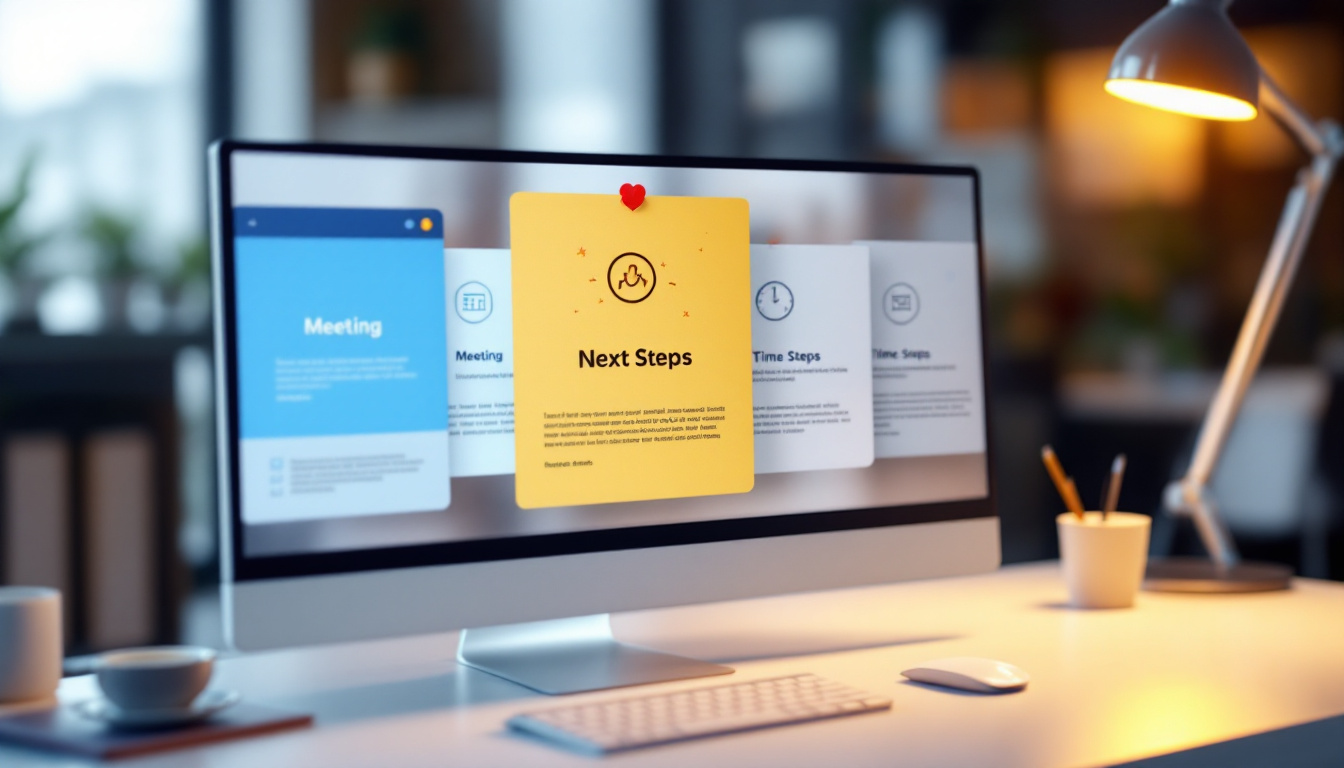In the business world, the quality of the relationship built during a negotiation isn’t limited to reaching an agreement. The crucial next step, often overlooked, is ensuring a relevant and effective follow-up. In 2025, where digitalization and organizational simplicity prevail, sending a well-crafted follow-up email becomes a strategic lever for strengthening relationships, solidifying commitments, and preparing for the next steps. Mastering email templates adapted to each context enhances professionalism while humanizing the process.
The Fundamentals for an Effective Follow-Up Email After a Negotiation
Before delving into templates, it’s essential to understand the keys to ensuring an effective follow-up message. Personalization, clarity, the appropriate tone, and meeting deadlines play a decisive role. In 2025, the trend is toward simplicity: an email should be short, precise, and sent within a maximum of 24 hours of the meeting, to always keep the exchange in the immediate context.
Here is a summary table of best practices to follow:
| Criteria | Tip |
|---|---|
| Clear Objective | Identify what you want to achieve, whether it’s a response, an action, or a meeting |
| Personalization | Reference a specific point discussed to reinforce sincerity |
| Conciseness | Get straight to the point, avoid unnecessary length |
| Timing | Send within 24 hours of the negotiation |
| Call to Action | Suggest a concrete step or a meeting to continue |
By combining these elements, each email becomes an opportunity to strengthen the relationship while positioning your proposal for the next phase.
Email Templates for Organizing an Effective Follow-Up Meeting After a Negotiation
Discuss how to adapt the form and content of your email depending on the situation encountered during the negotiation. Here are five proven templates, each corresponding to a specific objective.
1. Template for requesting a follow-up meeting after an initial negotiation
This template is ideal for restarting the conversation and planning the next step. It should be personalized according to the nature of the exchange and the interest expressed during the initial contact. In 2025, it will become common to use tools like Doodle or Calendly to facilitate scheduling. Warm introduction, reminder of the context Verification of interest and points discussed Suggested slots via an automatic scheduling link Cordial closing with a clear invitation
- Example:
- Subject: Arranging a follow-up for our discussion on your project
- Remaining at your disposal,
- 2. Template for confirming a meeting and preparing the points to be discussed
Good preparation guarantees a productive meeting. This email allows you to confirm the date and quickly list the key topics. In 2025, digitalization favors the use of tools like Google Meet or Microsoft Teams for planning and sharing the agenda.
Precise confirmation of the date and time
List of topics to be discussed
Prior sharing of documents or additional information
Reminder of the tool chosen for the meeting Points to include Example Date & time I confirm our meeting on , via Zoom.
- Topics to discuss
- – Negotiation follow-up
- – Finalization of terms
- – Next steps
| Required documents | 3. Template for following up with a prospect after a proposal |
|---|---|
| After sending a business proposal or an offer during negotiations, it is often necessary to follow up to get feedback. The goal is to demonstrate patience while remaining proactive, so this email should encourage a response without appearing pushy. | [date]Reminder of the proposal made [heure]Highlight its benefitsInvitation to discuss and answer questions |
| Proposal for a meeting via a scheduling link | Example: Subject: Follow-up on our proposal to improve your sales strategy I hope everything is going well on your end. Following our last exchange, I wanted to update you on the proposal I sent you regarding . This partnership could help you achieve your goals faster thanks to . |
| 4. Template for requesting feedback following a negotiation |
Obtaining feedback allows you to improve your proposals and identify areas for improvement. In 2025, requesting feedback is also an opportunity to strengthen the relationship by showing that you value the other party’s contribution. Express your interest in their opinion
Specific question about areas for improvement
- Proposal for further discussion if necessary
- Invitation to continue the relationship
- Example:
- Subject: Your opinion on our recent exchange
I would like to gather your opinion on our recent discussion. Your feedback is essential to adjust our future exchanges and better meet your expectations. Do you have any suggestions or areas for improvement?
I remain at your disposal to discuss this in more detail.
[sujet]5. Template for scheduling a project presentation meeting[avantage]
When a partnership or joint project is about to begin, organizing an introductory meeting is essential. This email should be specific, highlight the added value, and facilitate the selection of the best time.
Clear introduction of the objective
- Proposed dates with organizational tools
- Reminder of the benefits for the recipient
- Call for collaboration
- Example:
Subject: Meeting proposal to present our joint initiative
We would like to discuss a new initiative that could benefit your teams. I suggest scheduling a meeting via Trello or Slack to determine the best way to collaborate together.
Adapting templates according to the negotiation: tips and tricks for 2025
In 2025, the key lies in the ability to adjust templates based on the context and corporate culture. Personalization must go beyond simply mentioning the first name. It’s important to integrate visual elements, use modern tools like MailChimp or SendinBlue to automate certain processes, and integrate links to documents or calendars. Here’s a summary table of tips for optimizing your templates:
Tip
Practical Application
- Advanced Personalization
- Include sector- or negotiation-specific elements
- Use Scheduling Tools
- Integrate a Calendly or Doodle link to schedule a meeting
Automation
Schedule emails via MailChimp or SendinBlue
Visual Support Add a summary image or infographic Automated Follow-Up and Follow-Up Use Reminders to Remember Follow-Up These strategies ensure dynamic follow-up tailored to the reality of businesses in 2025, undergoing a digital transformation.
The Essential Tools for Effective Post-Negotiation Follow-Up in 2025
To maximize the impact of your emails, leverage digital tools effectively. Scheduling remains essential and can now be done via platforms like Zoom or Microsoft Teams. Contact management, meanwhile, relies on modern, collaborative CRMs like Slack or Asana. Here’s a list of preferred tools: Doodle and Calendly to easily organize your appointments. Zoom and Google Meet for remote meetings
Slack
| and | Asana |
|---|---|
| for coordinating with your teams | MailChimp |
| and | SendinBlue |
| for managing automated email campaigns | Integrating these tools into your follow-up process ensures seamless continuity between the negotiation and the next step, while maintaining a clear record of each interaction. |



